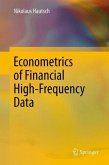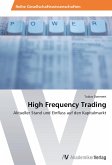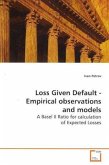This dissertation explores using high-frequency data in empirical asset pricing models. It includes three chapters. The first chapter provides a survey on the use, analysis, and application of high-frequency data. I concentrate on the research using intraday observations on volatility measurement and forecast evaluation, especially after the realized volatility approach introduced by Andersen and Bollerslev (1998). The second chapter explores how to estimate betas from high-frequency data. I extend the market model and construct a consistent estimator of the security beta based on lead, lag and contemporaneous betas from intraday returns. In the third chapter, I consider the problem faced by a professional investment manager who wants to track the return of the S&P 500 index with 30 DJIA stocks. I investigate that under which circumstances, there is benefit in using high-frequency returns, rather than daily returns to estimate the conditional covariance matrix.
Bitte wählen Sie Ihr Anliegen aus.
Rechnungen
Retourenschein anfordern
Bestellstatus
Storno








